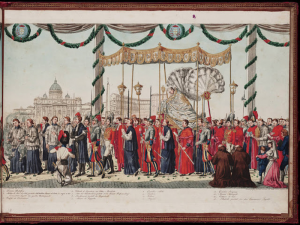 Heb 9:11-15 The blood of Christ will cleanse our consciences
Heb 9:11-15 The blood of Christ will cleanse our consciences
Among the writings that comprise the canon of the Christian Scriptures one work stands in a class by itself: the Epistle to the Hebrews. Each of the thirteen New Testament books is unique but Hebrews defies categorization. Is it a book, a letter, a sermon, or an epistle? Faith seeking understanding: this inquiring mind wants to know.
For nineteen centuries biblical scholars ascribed Hebrews to Saint Paul, the New Testament epistoleer par excellence. The general consensus of modern scholarship, however, believes that Hebrews is not a letter, was not authored by Paul, and was not addressed to the “Hebrews.”
This work is probably a sermon, and is the best-written composition in the entire New Testament, maybe next to the Gospel According to Luke, which also is recognized as a stylistic masterpiece. The anonymous author Hebrews (Barnabas? Luke?) describes his work as a “word of encouragement,” so that readers and hearers can open their minds and hearts to the living God who expresses himself in the Word and in the Eucharist.
In the Catholic liturgy we express our faith in Christ through the Word of God and through the Word made flesh. Corpus Christi, Latin for “the Body of Christ,” is a solemnity that emphasizes the Scriptures and what Saint Thomas called “the sacrament of sacraments”?the Eucharist.
The Church has always venerated the Scriptures as she worships the Body of the Lord. She never ceases to avail herself to the faithful through the perpetual celebration of the Bread of Life, taken from the one table of God’s Word (cf CCC no. 103; DV 24).
The author of Hebrews refers to the work as “a letter of encouragement” (13:22) delivered to Jewish priests who converted to Christianity but continued to harbor misgivings as to whether Christ’s sacrifice on the cross was greater than the sacrifice of Moses from the Old Covenant.
The preacher reminds the priests of the preexistence, incarnation, and exaltation of Jesus Christ. “In times past, God spoke in partial and various ways to our ancestors through the prophets; in these last days he spoke to us through a son, whom he made heir of all things and through whom he created the universe” (1:1-3). This is called “high” Christology, a high level of awareness that Jesus is the Incarnate Son of God. He is superior to the angels, “as the name he has inherited is more excellent than theirs” (1:14). Jesus is the word made flesh, consubstantial with the Spirit and with the Father (see Jn 1:1-5), God’s only word of salvation that he communicated to humanity through the Divine Logos.
God’s plan surpassed the covenants that he struck with Noah and Abraham and the prophets. Moses was the faithful servant who prepared the Israelites for the coming of the Messiah and he spoke of the blood of bulls and goats as the means to the forgiveness of sins. The finger of God wrote the Law on stone tablets to be carried about by the Levitical priests in the Ark of the Covenant, a tabernacle constructed by human hands. Quite literally, the Word of God is written in stone but is also written on the hearts of all believers.
Jesus’ role as mediator of the New and Eternal Covenant has been brought by his sacrificial death for “he has obtained so much more excellent a ministry as he is mediator of a better covenant, enacted on a better promise” (Heb 8:6). Jesus is a “minister of the sanctuary and of the true tabernacle of the Lord, not established by human beings” (8:2).
The death of Jesus effected deliverance from sins committed throughout the history of the human race but by his sacrifice the old way has been abrogated, reflected. “For this reason he is the mediator of a new covenant, since a death has taken place for the deliverance of sins under the first covenant,” that is, the long period of history that existed before the coming of the Christ (cf 9:15).
Our conscience is the inner sanctum where God dwells within us and where the Son of God’s atoning sacrifice has its greatest effect (Heb 8:10). In ancient times the people were excluded from standing before the Holy of Holies because their offerings and sacrifices—burnt offerings and the blood of bulls and goats—stood merely as symbols for the divine worship needed for spiritual renewal. How could the blood of bulls and goats possibly obtain forgiveness of sins?
In the Church the Holy Spirit expresses the life we have received through the body and blood of Christ, “a life that cannot be destroyed” (Heb 7:16). Worship of the Eucharist and veneration of the Word involve Christian prayer, a continual offering of praise and confession of the Holy Name.



